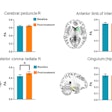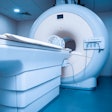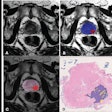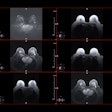The use of MRI can help clinicians find soft-tissue defects that contribute to hearing loss in children, according to an article published in the September issue of Archives of Otolaryngology--Head and Neck Surgery.
Hearing loss related to sensory nerves affects thousands of children each year; 50% of cases are genetic, 25% are acquired, and 25% are of unknown origin. Radiography and CT are often used to evaluate inner ear abnormalities in children with hearing loss by analyzing bones in the ear, but these methods aren't optimal for hearing loss related to soft-tissue defects.
In the article (Vol. 134:9, pp. 945-952), a research team led by Dr. John McClay from the University of Texas at Southwestern Medical Center and Children's Medical Center in Dallas reviewed the medical records of 227 children ages 1 month to 17 years (average age 5.3 years) with a diagnosis of sensorineural hearing loss.
The children underwent MRI between June 1996 and June 2002, and a total of 170 children had clinical information available and were included in the study. Of these, 101 (59%) had hearing loss in both ears and 69 (41%) had hearing loss in one ear, for a total of 271 ears with sensorineural hearing loss.
MRI scans found the following:
- 108 ears (40%) had inner ear abnormalities
- 87 (32%) had abnormalities of the cochlea, including 63 (23%) with mild abnormalities and 24 (9%) with abnormalities considered moderate to severe
- 49 ears (18%) had cochlear nerves that were either missing (26 of 49, or 53%) or deficient (23 of 49, or 47%)
- Ears with severe and profound hearing loss had more abnormalities than those with mild and moderate hearing loss (48% versus 29%)
- Children with moderate, severe, or profound hearing loss in one ear had more inner ear abnormalities than children with hearing loss of the same severity in two ears (62% versus 38%)
The authors concluded by stating that while high-resolution CT has been the imaging modality of choice in the workup of children with sensorineural hearing loss, MRI can provide additional information regarding soft tissue in the ear, which can improve clinicians' ability to diagnose defects.
Related Reading
MRI: Loud and clear choice for sensorineural hearing loss? November 26, 2004
Copyright © 2008 AuntMinnie.com

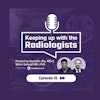

.fFmgij6Hin.png?auto=compress%2Cformat&fit=crop&h=100&q=70&w=100)


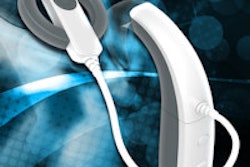

.fFmgij6Hin.png?auto=compress%2Cformat&fit=crop&h=167&q=70&w=250)



